C.H.E.K Level 4 Advanced Training
Well, we have now completed C.H.E.K Level 4! I am very happy with my students. They all did a great job preparing themselves to be true Level 4 C.H.E.K Practioners. As the years have gone by since beginning the C.H.E.K Certification program in 1995, I have been able to share more and more of my truth as a clinical practitioner with my students. When I started the program, I actually used the acronym “C.H.E.K” to mean “Corrective, Holistic, Exercise, Kinesiology.” But, due to feedback from various sources, it was determined that the word “HOLISTIC” was too far outside the paradigm of those who would gain most from my teachings. Therefore, to avoid alienating potential students, it was determined that instead of “holistic”, we would use “High-performance”. While that seemed to be the medicine of the day, it went against my inner-voice, for in my reality as a therapist, coach, and teacher, living holistically is the foundation of all high-performance achievements, particularly if they are to be long-term. As the tide of social-thought or “consensual reality” changed over the past few years toward a more holistic or “integrative” approach, it became apparent that we should return to my original intention as the means of marketing the intention and offering of the C.H.E.K Institute.
Last year, I updated many of my certifications, providing a much more comprehensive base of understanding with regard to the holistic nature of human life and function. The result was that there were many who were uncomfortable with my changes and challenged me almost every step of the way. I stuck to the words of my inner-voice this time and I am happy to share with all of you that the mind-set and quality of my students relative to the mission I share has radically improved! I rarely ever find myself in long debates with students anymore who are trapped in their heads trying to defend ideas postulated by other (so-called) experts in related fields; an example is constantly debating the issues of hollowing vs. bracing, which is an unnecessary argument among those that understand enough of how the body functions in an integrated fashion to effectively interpret “study design.” Today, my students are more willing to explore the depth of a “living philosophy” and how a person’s mind-set or “ideology” is far more commonly the etiology of their physical, emotional, mental or spiritual pain than any form of mechanical aberration.
This year, we reviewed all previous training from CP 1- 3, including infant development. I taught my students many holistic, effective methods for finding the root cause (etiology) of people’s challenges. Some methods included in the 2010 C.H.E.K Level 4 Advanced Training were:
* Healing art, including mandala therapy and the effects of a healing oracle.
* Inquiry (motivational interviewing)
* The use of healing herbs as teas and vapors
* The use of healing instruments; we worked with rattles, drums, stones, crystals, the Latin percussion clave, and
* Voice; I showed them how to use their voice for both diagnostic assessment and as a medium of vibrational healing
* How to perform a smoke offering with an invocation
* How to access and utilize intuition and how to differentiate intuition from thought and imagination, which is critical in the healing arts
* How to assess the human body-mind through both physical neurological and subtle energy correlations.
* How the human mind is constructed and how to access each individual at the level their energy and mind-set allows healing to occur a
* Jane Higgins taught us how to use Non-Violent communication in al our personal and professional relationships (learn more about this extremely valuable method at www.nvc.org).
* How to use different methods of meditation and how to still the mind so deeper intuitive states can occur
* How to use my 1-2-3-4 system for formulating an assessment and treatment/coaching plan, and more!
My main thrust with my students this year was “SIMPLIFICATION”! My system requires, first and foremost, that the students have a healthy capacity for rational thought. Sadly, that criteria alone eliminates a large population of potential practitioners, largely due to the fact that our educational system is highly ineffective at teaching people how to think, be it rationally or creatively; the currently used educational model (excluding the Waldorf school system and possibly the Montessori system) merely teaches people to follow directions and do what someone else tells them, which denatures creativity or the ability to generate novel thought processes, which are essential to therapists since every patient presents with a problem as novel as their own finger prints!
By the end of our training together, my students could comfortably take pages and pages of data gathered in the assessment process and narrow their suggested action items down to no more than 4 action items. They were able to create “sacred listening space” both within themselves, and in the sphere of their clients as they completed their practical testing. They all seemed genuinely pleased to know that they could now streamline their assessment and coaching process. It was clear to tmy students as to just why I could not teach them the methods I teach in C.H.E.K Level 4 prior to becoming a Level 4 qualified student, for they now realize that in order to be an effective Practitioner you must be able to put your mind aside – empty the bone so to speak. I teach all my students that in order to have an effective mind we start with the foundation, or there is no rational basis by which intuitive inputs can be effectively interpreted. They shared how many healers they know of have intuitive access, yet don’t understand anatomy, physiology, psychology and all the necessary sciences of healing and often can easily misinterpret their impressions. If you intuit numbers by have no syntax for mathematics in your intellectual intelligences base, you may as well be looking at shapes and forms emerging from a kaleidoscope and trying to assign some form of significance, which usually entails “guessing”. When working with clients who are tired, stressed, and in pain, guessing is far different than “intuiting,” as they all learned.
Here you can see several photos of them working with volunteer clients during their testing period.
I am deeply proud of each and all their efforts – what a fantastic group – ALL 13 of them. They each have a unique skill-set and their own special way of approaching life and their clients. They each truly understand the importance of being a healthy individual, thinking for themselves, and living the C.H.E.K Principles as I’ve taught. My method of teaching is not merely reproductive (simply copying what others say or do), but rather is a mix of inductive, deductive and intuitive approaches.
I will close this post by once again saying “Thank You!” to all my 2010 C.H.E.K Level 4 students, and to their families. I also am grateful to the Volunteer clients who so graciously gave of their time to come and participate with my students with their “real life issues and challenges”, as well as Vidya and the CHEK Institute staff for all their supportive work to allow this event to take place. Vidya was instrumental in keeping all organized – she even made gluten free brownies for my students. I personally feel great reward knowing that there are now 13 more people in the world that have concluded the bulk of my teachings and can represent the C.H.E.K approach effectively, authentically.
Love and chi to you All!
Paul Chek
[nggallery id=10]

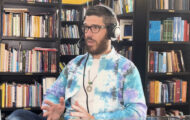
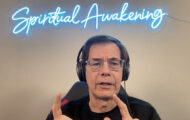
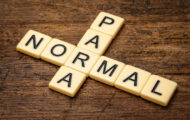

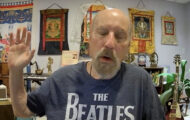
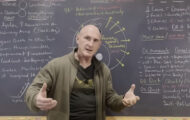





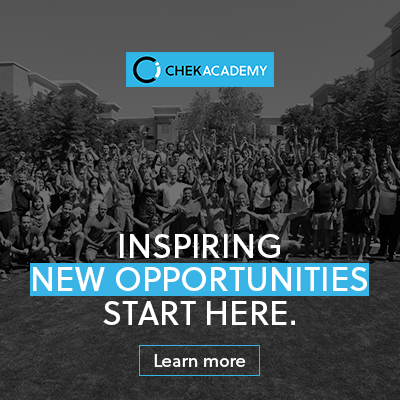

Find me on the web